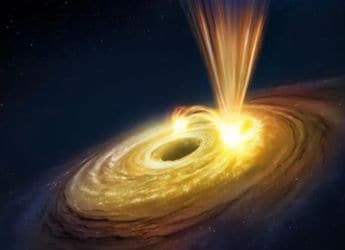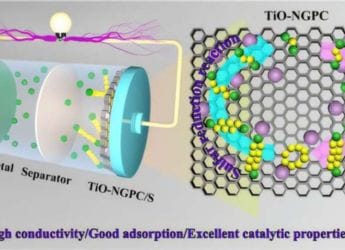- Home
- Science
- Science News
- Scientists at CERN's LHC Observe Three "Exotic" Particles for First Time
Scientists at CERN's LHC Observe Three "Exotic" Particles for First Time
CERN's LHC is the machine that found the Higgs boson particle, which along with its linked energy field is said to be vital to universe's formation

Quarks are elementary particles that usually combine in groups of twos and threes
Scientists working with the Large Hadron Collider (LHC) have discovered three subatomic particles never seen before as they work to unlock the building blocks of the universe, the European nuclear research centre CERN said on Tuesday.
The 27 kilometre-long (16.8 mile) LHC at CERN is the machine that found the Higgs boson particle, which along with its linked energy field is thought to be vital to the formation of the universe after the Big Bang 13.7 billion years ago.
Now scientists at CERN say they have observed a new kind of "pentaquark" and the first-ever pair of "tetraquarks", adding three members to the list of new hadrons found at the LHC.
They will help physicists better understand how quarks bind together into composite particles.
Quarks are elementary particles that usually combine in groups of twos and threes to form hadrons such as the protons and neutrons that make up atomic nuclei.
More rarely, however, they can also combine into four-quark and five-quark particles, or tetraquarks and pentaquarks.
"The more analyses we perform, the more kinds of exotic hadrons we find," physicist Niels Tuning said in a statement.
"We're witnessing a period of discovery similar to the 1950s, when a 'particle zoo' of hadrons started being discovered and ultimately led to the quark model of conventional hadrons in the 1960s. We're creating 'particle zoo 2.0'."
In another development, ten years after it discovered the Higgs Boson, the Large Hadron Collider is about to start smashing protons together at unprecedented energy levels in its quest to reveal more secrets about how the universe works.
The world's largest and most powerful particle collider started back up in April after a three-year break for upgrades in preparation for its third run.
From Tuesday, it will run around the clock for nearly four years at a record energy of 13.6 trillion electronvolts, the European Organisation for Nuclear Research (CERN) announced at a press briefing last week.
Get your daily dose of tech news, reviews, and insights, in under 80 characters on Gadgets 360 Turbo. Connect with fellow tech lovers on our Forum. Follow us on X, Facebook, WhatsApp, Threads and Google News for instant updates. Catch all the action on our YouTube channel.
Related Stories
- Samsung Galaxy Unpacked 2025
- ChatGPT
- Redmi Note 14 Pro+
- iPhone 16
- Apple Vision Pro
- Oneplus 12
- OnePlus Nord CE 3 Lite 5G
- iPhone 13
- Xiaomi 14 Pro
- Oppo Find N3
- Tecno Spark Go (2023)
- Realme V30
- Best Phones Under 25000
- Samsung Galaxy S24 Series
- Cryptocurrency
- iQoo 12
- Samsung Galaxy S24 Ultra
- Giottus
- Samsung Galaxy Z Flip 5
- Apple 'Scary Fast'
- Housefull 5
- GoPro Hero 12 Black Review
- Invincible Season 2
- JioGlass
- HD Ready TV
- Laptop Under 50000
- Smartwatch Under 10000
- Latest Mobile Phones
- Compare Phones
- Lava Play Max
- Poco C85 5G
- Honor Magic 8 Lite
- Jolla Phone
- Realme P4x 5G
- OnePlus Ace 6T
- Nubia Flip 3
- Nubia Fold
- Asus ProArt P16
- MacBook Pro 14-inch (M5, 2025)
- OnePlus Pad Go 2
- Poco Pad M1
- Just Corseca Skywatch Pro
- Honor Watch X5
- Acerpure Nitro Z Series 100-inch QLED TV
- Samsung 43 Inch LED Ultra HD (4K) Smart TV (UA43UE81AFULXL)
- Asus ROG Ally
- Nintendo Switch Lite
- Haier 1.6 Ton 5 Star Inverter Split AC (HSU19G-MZAID5BN-INV)
- Haier 1.6 Ton 5 Star Inverter Split AC (HSU19G-MZAIM5BN-INV)

















